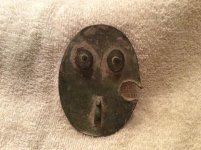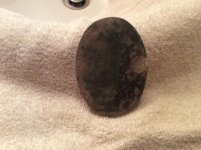MetalDetectOH
New Member
I found this buckle several months ago and posted it in this forum and thought it was an ordinary belt buckle. The reason I posted it then was because I was trying to figure out why there was a hole in it. But my buddy recently found one that looks almost exactly like it, and he confirmed that his was a shoulder belt plate from War of 1812. They were found in same general area. Do you think this is from War of 1812 as well? They are on eBay for several hundred dollars (in worse condition than mine). Any help would be appreciated. You can find the ones listed on eBay by searching for War of 1812 shoulder belt plate. (Will figure out how to put in a link to it later)



